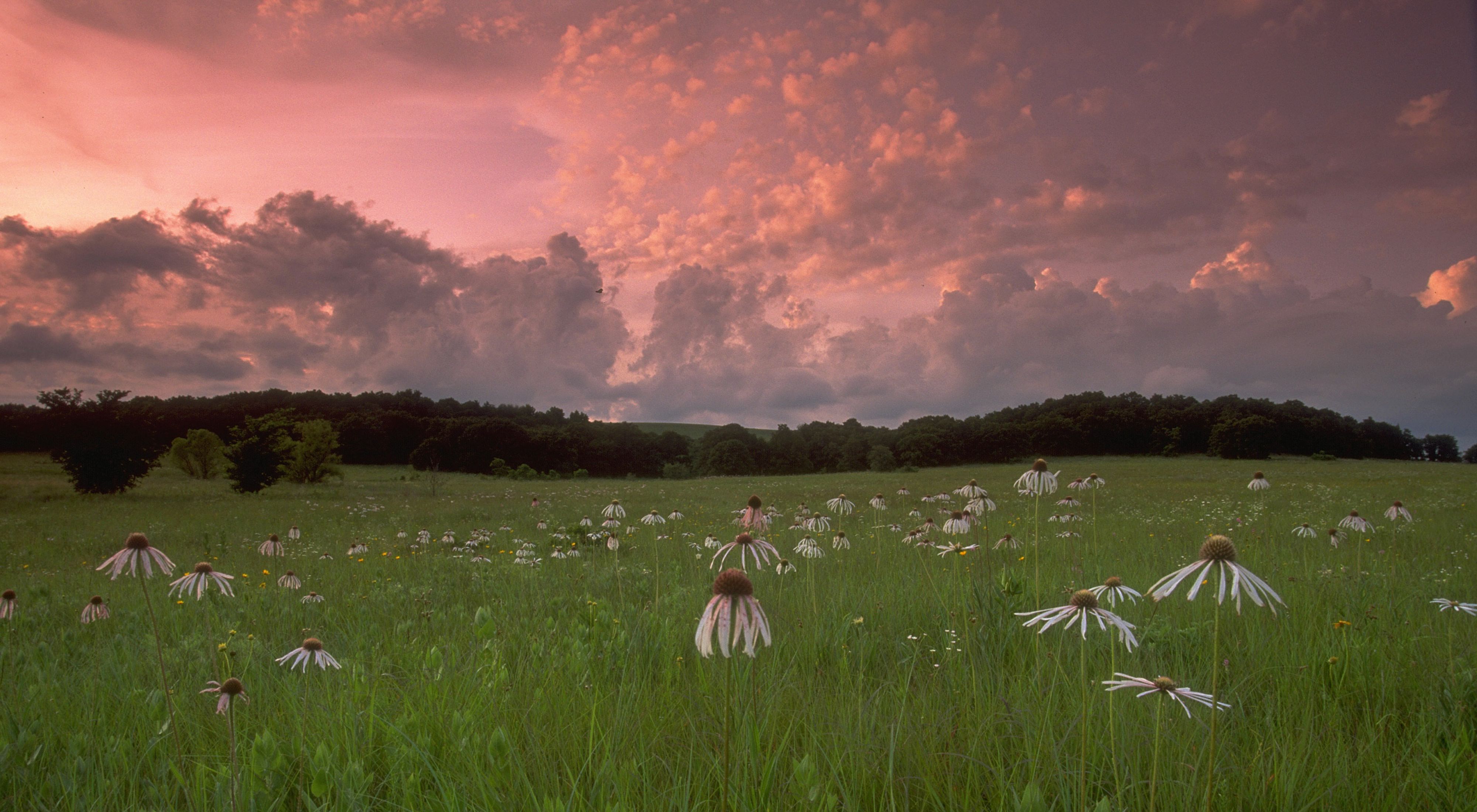
What began as a bride’s wedding present to her groom has grown into a gift for all who love prairies.
Judy Parks established the Weaver program in 1995 to celebrate her new husband, Ron Parks. Longtime supporters of The Nature Conservancy and its mission, the couple wanted to provide grants to encourage graduate students whose research focused on Great Plains ecosystems and their conservation. They inspired others to donate to the fund, and grew the endowment from that day forward.
Named after J.E. Weaver, an internationally renowned plant ecologist called “the Father of Grassland Studies,” the Weaver Grants Program at The Nature Conservancy is celebrating its 28th year with a new batch of awards.
“One of my favorite parts of my year is reading all the grant proposals we receive, and learning about the incredible research going on around the Great Plains,” said Director of Science Chris Helzer. “Beyond what we learn, TNC gets the opportunity to build relationships with five researchers—relationships I hope will continue into their future careers.”
“We’re proud to see the continuity and the progress of the Weaver Program,” said Judy. “Now that Ron and I are stewards of a grassland, we can appreciate firsthand the interest of the students in understanding the complex prairie environment. Getting to review the proposals each year has given us the opportunity to learn about the concerns that go into taking care of the prairie.”
To date, the Weaver program has helped to fund more than 110 projects.
Erin G. Rowland-Schaefer, Northern Illinois University
On the Ground and From Above: How Small Mammals Are Impacted By Habitat Type, Management Activities, and Plant Communities
Erin will be looking at ten years of data from TNC’s Nachusa Grasslands to understand how small mammals (mice, voles, etc.) respond to habitat fragmentation, fire and bison grazing.
Kayla Johnson, Oklahoma State University
Effects of an Integrated Management Approach on Controlling the Invasive Broadleaf Plant Sericea Lespedeza (Lespedeza cuneata) in the Tallgrass Prairie
Kayla will work with TNC’s Joseph H. Williams Tallgrass Prairie Preserve in Oklahoma and study control methods for a nasty invasive plant. She’ll evaluate burn season effects, as well as combinations of fire, grazing and herbicide treatments.
Ny Aina Minoarimanana Rakotoarivony, Oklahoma State University
Impact of Invasive Species on Plant Diversity in Tallgrass Prairies
This project, too, is looking at the impacts of invasive Sericea lespedeza on prairie plant communities. Time, effort, and resources are spent trying to control this plant, yet success has been limited. What are the actual impacts on plant diversity at multiple scales?
Nivedita Priyadarshini Kamaraj, Oklahoma State University
Monitoring Grassland Biodiversity – A Remote Sensing Perspective
Remote sensing (aerial and satellite imagery) shows promise for detecting and monitoring plant diversity, but we still have a long way to go in terms of doing so accurately. This project will be studying effects of land management practices on plant diversity, and trying to measure those effects both on the ground and via remote sensing.
Grace Thomas, University of Nebraska-Omaha
Effects of Bison and Cattle Grazing on Milkweeds and Monarch Butterflies
This project builds on previous work on milkweed and grazing, done by TNC and UNO. Grace will be looking at multiple sites across the Great Plains to see how grazing affects both milkweed numbers and monarch egg-laying. She’ll look at ungrazed sites, as well as sites grazed by both bison and cattle.
The Nature Conservancy is a global conservation organization dedicated to conserving the lands and waters on which all life depends. Guided by science, we create innovative, on-the-ground solutions to our world’s toughest challenges so that nature and people can thrive together. We are tackling climate change, conserving lands, waters and oceans at an unprecedented scale, providing food and water sustainably and helping make cities more sustainable. The Nature Conservancy is working to make a lasting difference around the world in 81 countries and territories (40 by direct conservation impact and 41 through partners) through a collaborative approach that engages local communities, governments, the private sector, and other partners. To learn more, visit nature.org or follow @nature_press on X.
